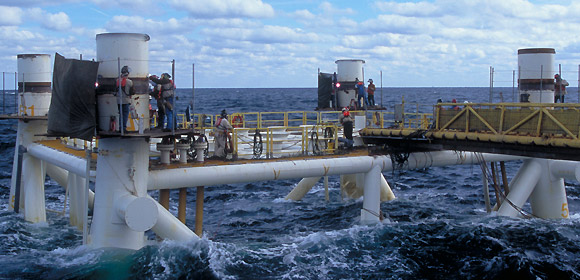OPEC’s decision recently to extend oil production cuts is likely to provide momentum to the promising early signs of recovery in the oil and gas industry, offering the prospect of continued stability and, possibly, even growth in oil prices.
That’s according to Jenny Erskine, partner in oil and gas at Deloitte in the Western Cape who cautioned, however, that the recovery was likely to be gradual as global oil inventories remained high and growth in demand relatively low.
“The extension of the output cuts is good news for the oil and gas industry particularly upstream companies. There have been definite signs of recovery since the initial OPEC cuts in January. Capital expenditures are up and there’s been more investment. This trend is now likely to continue and may well gain momentum,” Erskine said.
The Organization of Petroleum Exporting Countries met in Vienna recently and voted to extend the six-month agreement to cut production by 1.8 million barrels a day.
In the two years before the January production cuts, a global oil price slump saw the price per barrel plummet from over US$100 in mid-2014 to record lows of about $27 in early 2016. Since then prices have risen in the last few months to stabilise at around $50 a barrel.
Erskine said companies in the industry had reacted to the oil price crash by going into survival mode, slashing capital expenditure, shutting down marginal operations and halting exploration. While many remained in that mode, other more resilient companies were adjusting to the ‘new normal’ of $50 a barrel.
“Some companies have weathered the storm. They’ve implemented cost cutting and efficiency measures and the price stability over the past six months is encouraging them to begin, albeit cautiously, to adopt a more expansionary approach. There’s been an increased investment, not just in fields already in production but those in development too.”
The latest OPEC output cut should sustain the current $50 level for the foreseeable future, with an increase to the high $50s possible by the end of the year or early 2018 as global oil stockpiles are consumed-Erskine
Erskine was particularly encouraged by the uptick in exploratory activity. “One of the more unfortunate consequences of the oil price slump was that upstream companies reduced their exploration spend in line with a fall in cash flows. This approach, while understandable, is a Catch-22; not spending money during the short-term turmoil will restrict taking advantage of the positive cash flows when the oil price increases.”
Erskine said it generally takes at least five years for an oil project to take off commercially after exploration. “In Africa, it often takes longer, up to 10 years. If companies cut back on exploration spending, when the cycle ticks up again, oil companies will be unprepared to tackle the demand. So, the increase in exploration activity, modest thought may be, is an encouraging sign.”
However, for every company diverting its incremental cash flow into capital spending, several others were taking advantage of the recent price stability to pay down debt incurred during the heady years of the oil boom.
Commenting on the prospect of further oil price rises, Erskine said that the latest OPEC output cut should sustain the current $50 level for the foreseeable future, with an increase to the high $50s possible by the end of the year or early 2018 as global oil stockpiles are consumed.
The newfound stability was also proving beneficial for companies offering services or equipment to the oil and gas sector which had been particularly hard hit by cost cutting during the downturn. Erskine predicted that those offering their customers ways to maintain lower costs and higher efficiencies would be best poised to take advantage of the nascent recovery.
She also expects increased consolidation and M&A activity in the sector as companies seek to rebalance their portfolios as they emerge from the slump or achieve the scale necessary to make the substantial investments in research and development into the new technologies required for increased productivity.
Turning to South Africa’s budding oil and gas exploration industry, Erskine said the OPEC decision and early stage recovery offered an opportunity to begin to break out of the doldrums in which it had been stuck for close to three years.
“South Africa needs to be ready to capitalise on renewed oil and gas exploration. Although the local oil and gas sector is in the early development phase, it has the potential to create significant economic value for the country.”
But for this to happen, it was crucial that uncertainty around the draft Mineral and Petroleum Resources Development Act (MPRDA) Amendment Bill be cleared up. The President declined to sign an Amendment Bill to the MPRDA in January 2015, a development widely welcomed by the industry as the proposed amendments failed to clarify how the government intended to exercise its 20% free share in profits (“free carry”) in all new gas and oil projects. Since then, the Bill has languished in legislative limbo.
“With the global oil and gas market showing signs of recovery, it’s now time for South Africa to act swiftly and decisively on finalising the MPRDA Amendment Bill, one that addresses investor concerns and opens SA as a new frontier in Africa,” Erskine said.

